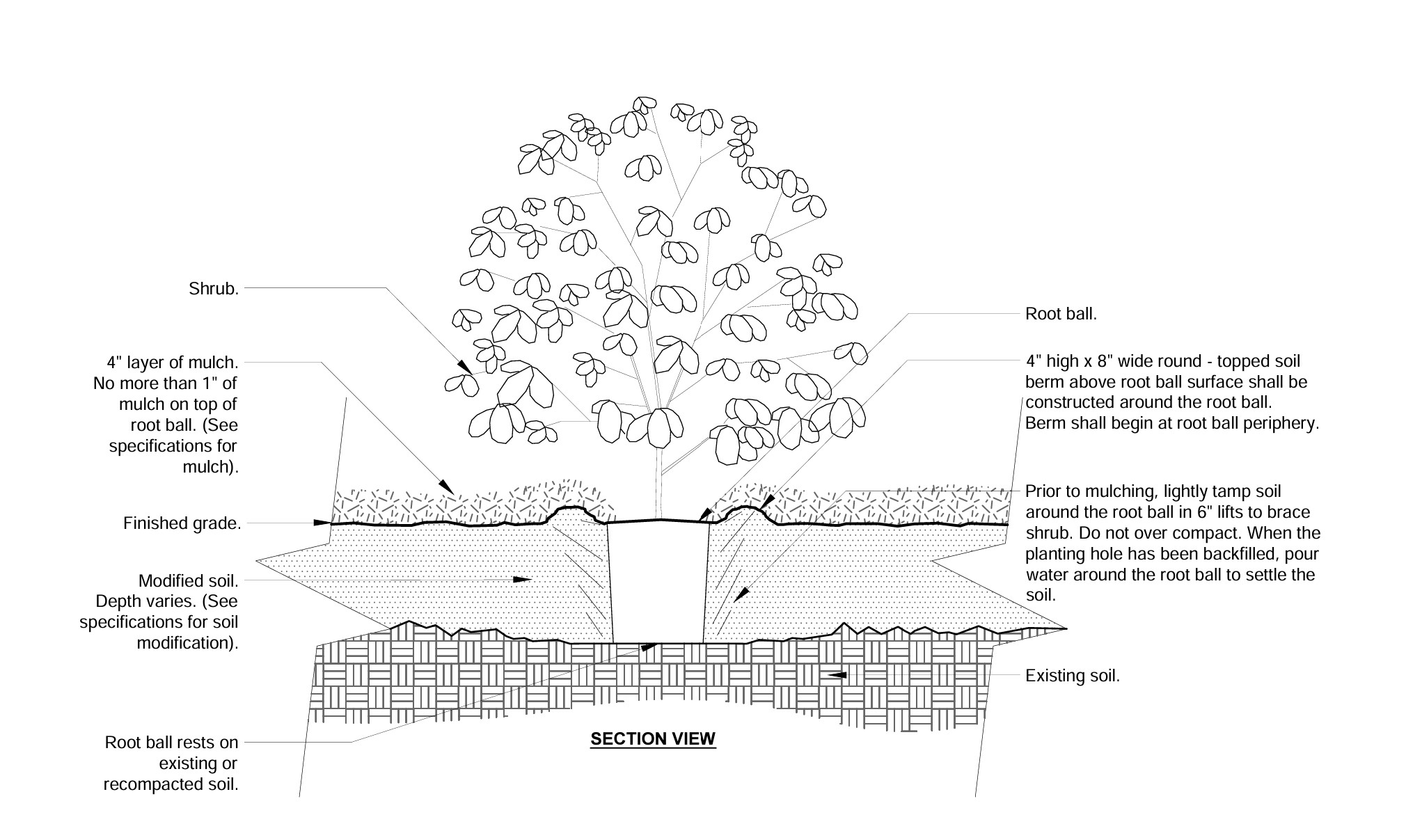Planting installation is critical to setting a new planting up for success. You can have the right plant and the right conditions but fail to install properly, resulting in poor health, limited structure, or full decline. Landscape architects need to understand the basics of sight preparation and installation of a new planting to make sure the site contractors are following best practices for planting. This section will cover the basic best practices for planting and site preparation.
Planting best practices¹ ²
- Plant in cooler temperatures and avoid planting during a hot day
- Keep roots moist during time of planting
- Water plants immediately after planting
- Trim dead or broken branches but do not prune most plants until after one year when they are established
- Make sure any circled roots are untangled and cut away any dead or dried-out roots
Figure 1 – Urban tree foundation (2014) – detail of a shrub planted in modified soil
Tree installation¹ ²
Always reference the most updated Canadian Landscape Standard by the Canadian Society of Landscape Architects and Canadian Nursery Landscape Association for proper tree installation best practices. In addition, resources from the International Society of Arboriculture (ISA) are trusted materials for referencing tree planting best practices and any arborists on the project should have their ISA license.
General steps for tree planting include:
- Dig a hole no deeper than the bottom of trunk flare and bottom of root ball. The trunk flare should be completely above the ground to prevent moisture and organisms from damaging the trunk. In general, placing the trunk too far above ground is always better than too deep as more soil can be added. The hole should be dug 2-3 times wider than the root ball, sloping gently inward.
- If tree came in a wire basket, remove the wire basket by snipping individual wires as they could strangle roots. If tree is B&B, slide the burlap out of the planting.
- Where wind is a concern, use stakes with straps for support below half the tree’s height but be sure to remove after tree is established as trees build strength when subjected to wind.
- All parent soil should be saved beside the hole and during planting.
- Mix existing site soil with compost if needed, no more than 5-10% of compost
- Lightly water the soil 1-2 times while placing the tree in the hole
- Build a soil berm around root ball surface
- Mulch with 3-4″ and keep much 2-3″ away from trunk to avoid a ‘mulch volcano’
- After planting, water beyond the tree’s dripline to encourage proper root growth and establishment
Figure 2 – Urban tree foundation (2014) – detail of a tree with berm in modified soil
1. Reed, Sue. Energy-wise Landscape Design – A New Approach for your Home and Garden. 2010.
2. Urban Tree Foundation. Planting Details and Specifications. International Society of Arboriculture, 2014.

